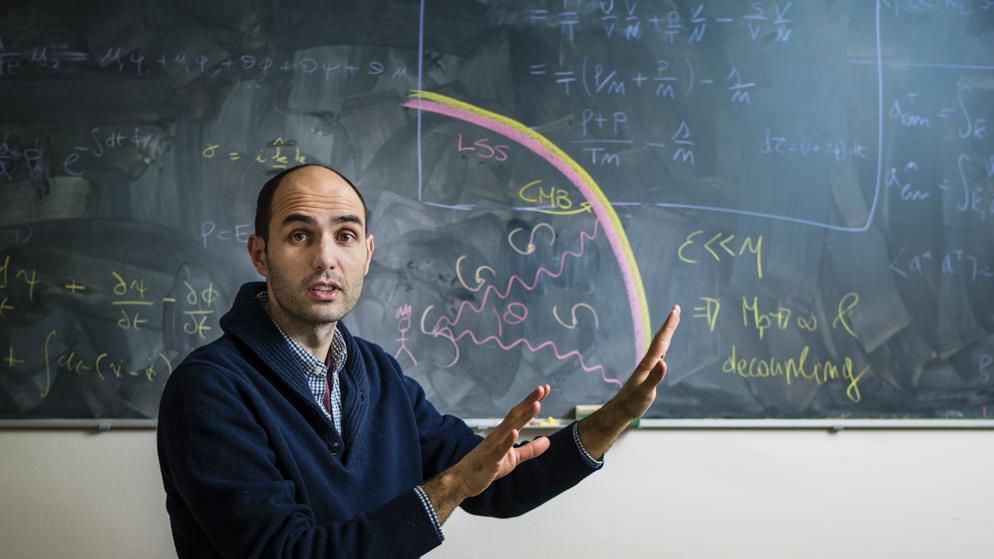The blackboard of Enrico Pajer

Who are you and what do you do?
I am an Assistant Professor in Theoretical Physics in the Physics Department at Utrecht University. The adjective "theoretical" means that for my own sake and that of others I am not allowed in a lab. I don't wear a lab coat either. I work mostly with pen and paper and some numerical aid when needed. My goal is to understand the evolution of the universe as a whole; in other words I try to construct a cosmological model that explains all that we see in the universe as cosmological scales that is compatible with the laws of nature we have tested.
Where is this workplace?
I work in a nice bright office at the 7th floor of the Buys Ballot building, at the Uithof. Perhaps the only two remarkable objects in my office are a standing desk and a huge blackboard covering most of the wall. Here I discuss with my students, postdocs, collaborators and visitors, for hours. Every week. Eventually a good idea comes up and we have to go back to our desks and do some real calculations. If the idea bears out, we tell it to our colleagues around the world by publishing a paper. If not, we are going back to the blackboard again.
What is interesting about your research?
It is hard to choose a single interesting thing because I love so many different subjects. In recent years I have been interested in understanding the laws that determine the distribution of matter in the universe. All of it. Galaxies (and therefore starts and the planets around them) are distributed in the universe in a remarkable pattern, the origin of which is still uncertain but can be traced back to the first fraction of second of the Big Bang. One challenging aspect of this investigation is that, most of the matter in the universe (7 parts in 8) is not ordinary atoms or molecules like you and me. Rather an invisible type of matter known as Dark Matter. As you might expect this is hard to "see". Luckily we have another piece of evidence of what happened in the first fraction of a second of the Big Bang: the Cosmic Microwave Background. This is the oldest electromagnetic radiation, the oldest light if you want. It gives us a picture of our universe in its infancy. This is the oldest picture that can ever be taken using light and has played a crucial role in our understanding of the cosmos.